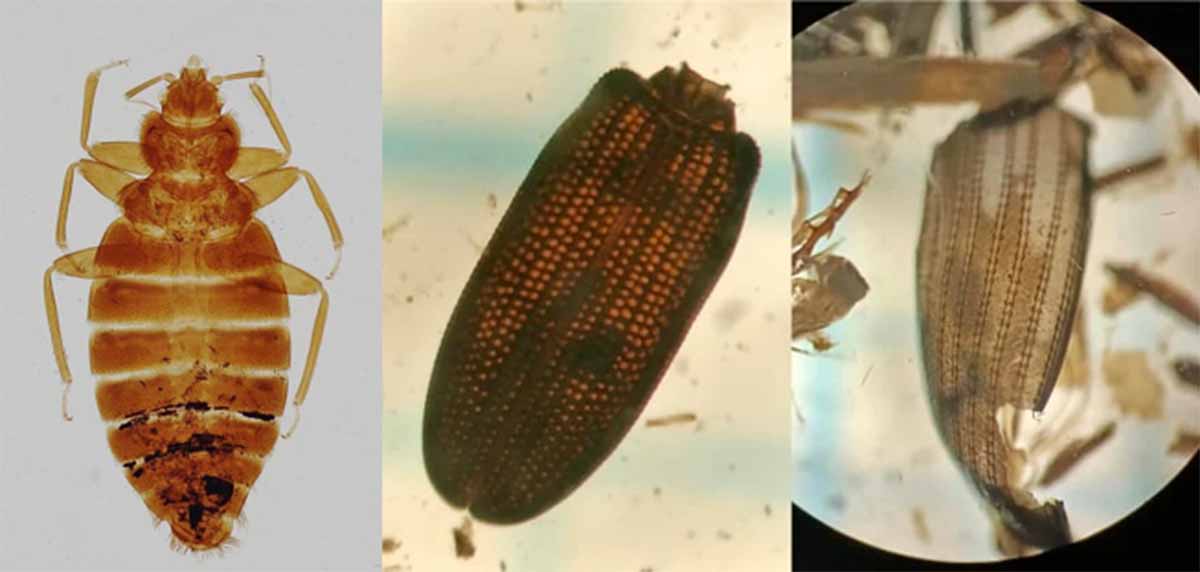Romans Look to Have Brought Bedbugs to Britain
In a fascinating addition to our understanding of ancient Britain, recent archaeological work at Vindolanda, a key Roman garrison south of Hadrian's Wall in Northumberland, has unearthed evidence suggesting that the Romans may have introduced bedbugs to Britain. This discovery, made by Katie Wyse Jackson, a 24-year-old graduate student from University College Dublin, adds a new layer to the narrative of Roman Britain.
The research not only adds to our understanding of daily life in Roman Britain, but also showcases the potential of archaeoentomology as a tool in archaeological studies. "These tiny creatures can offer crucial insights into living conditions in ways that cannot be otherwise found," Wyse Jackson remarks, emphasizing the significance of her findings.
- Latest Vindolanda Find: A Strange Naked Man on a Carved Relief Tablet
- Roman Graffiti Shows Carved Phallus With Insult Found at Vindolanda Fort
Mens pediculis domesticis! (Mind the Bedbugs!)
Wyse Jackson's find consists of two thoraces of the common bedbug, specifically Cimex lectularius, dating back to around AD 100. This pushes back the timeline for the presence of bedbugs in Britain, challenging the previously held views on Roman cleanliness and hygiene. The Romans, often celebrated for their sanitation practices, might have inadvertently facilitated the spread of these pests.
Dr. Andrew Birley, leading the Vindolanda archaeological team, and Dr. Stephen Davis, a lecturer in environmental archaeology at UCD, have both commented on the significance of these findings. Dr. Davis pointed out that while ancient Greek texts mention bedbugs as early as 400 BC, their discovery in a British archaeological context is remarkably rare. The Vindolanda bedbugs thus represent the earliest known evidence of these insects in Britain, predating findings from Alcester, Warwickshire.
- Volcano-blasted Herculaneum Roman Soldier Tells His Ancient Secrets
- Three ancient cities to rival London, Paris and New York

Vindolanda site, in Northumberland. (Vindolanda Trust)
Archaeoentomology Opens New Avenues of Investigation
The analysis of soil samples from Vindolanda not only revealed the presence of bedbugs but also a variety of beetles, shedding light on ancient trade, food storage, hygiene practices, and waste disposal systems. This evidence underscores the symbiotic relationship between humans and synanthropic insects, which flourish in human environments, and so have a story to tell.
Wyse Jackson's work, by illuminating the cohabitation of Romans and insects such as bedbugs and beetles, offers a more nuanced view of life in Roman Britain. She notes the humanizing aspect of such discoveries, mentioning ancient beliefs in the medicinal properties of bedbugs, including their use in treating ear infections as per the Roman philosopher Pliny.
The introduction of bedbugs to Britain, likely through Roman settlement and the movement of goods such as straw mattresses, highlights some of the more subtle unintended consequences of the Roman conquest initiated in AD 43. Despite their advancements in engineering and sanitation, the encounter with bedbugs at Vindolanda adds complexity to our understanding of ancient hygiene practices and the daily realities of life in Roman Britain.
Top image: Left; Cimex lectularius, bedbug. Center; Wing casings (elytra) of Oryzaephilus surinamensis found at Vindolanda. Right: Almost complete wing casing (elytron) of Aphodius sp. Source: Left; Daktaridudu/CC BY-SA 4.0, Center and Right; Katie Wyse Jackson/Vindolanda Trust
By Gary Manners

















